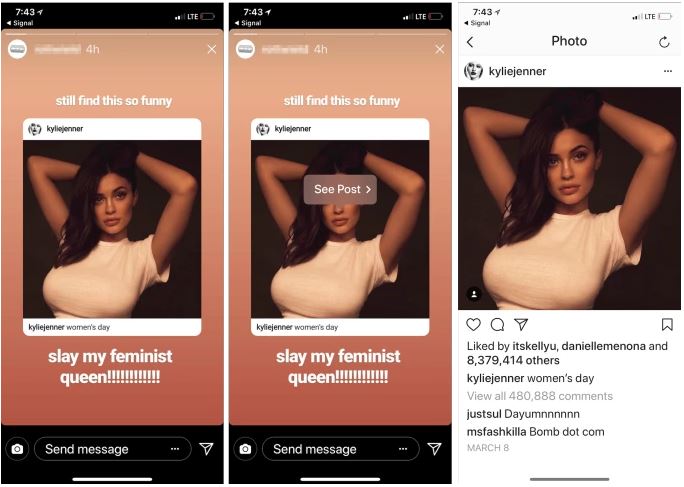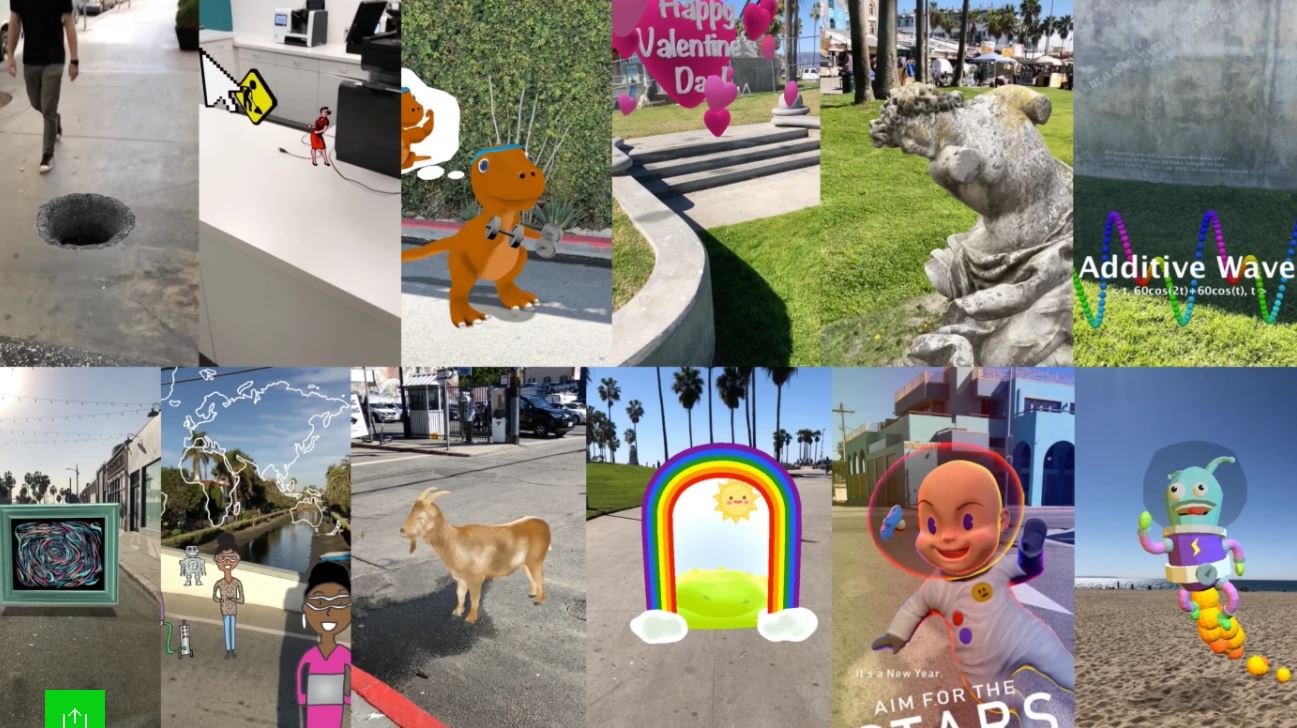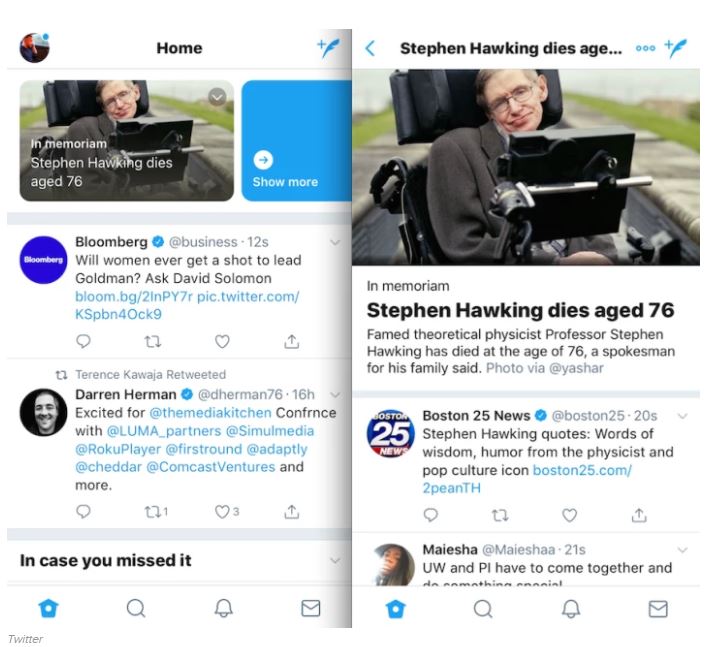media update’s Christine Gerber unpacks these developments and why they’re important.
Instagram’s new ‘regram’ feature
A TechCrunch reader recently sent the company screenshots of a new ‘regram’ feature, which Instagram confirmed is appearing, as a test, to a small portion of users.
This new feature will allow users to share other people’s posts to their own Stories. However, for those would prefer that their posts not be shared, the option is available – only public posts may be shared.
 Screenshots from TechCrunch of the 'regram' feature
Screenshots from TechCrunch of the 'regram' feature
Previously, users had to take a screenshot of a post to share it on their own Story. This gave them limited options when it came to adding comments to the post, and it made cropping quite difficult.
It seems as if the new ‘regram’ feature is going to make users’ lives a lot easier.
Here’s how it works: Users can choose any permanent Instagram post and, with a single tap of a button, embed it into their own Story. From there, the possibilities are endless. Users can move or resize another author’s post, or even play with all the commentary options.
According to TechCrunch writer John Constine, “Facebook says it doesn’t have details about a wider potential rollout beyond the small percentage of users currently with access”.
Why it matters: Brands will have the option of using Stories to cross-promote a new ad campaign by sharing, or 'regramming', their Instagram campaign onto other platforms.
Brands will no longer be limited to the amount of exposure they get on Stories, as the sharing option will allow audiences to share the content of a campaign across a variety of platforms and to multiple users.
“Employing Stories to drive extra Likes and comments to permanent posts could help [brands] gain more visibility in Instagram’s feed ranking algorithm,” says Constine.
Snapchat’s third-party AR lenses
The news: Snap Inc is going to start putting augmented reality (AR) lenses built by third-party creators at the forefront of Snapchat. Third-party content is content created by users who are not employed by Snap Inc.
Hopefully, this will help to make creator-made content a main priority on the platform.
The news was first reported by Mashable, who provides examples of third-party created content.
 Image sourced from Mashable
Image sourced from Mashable
The new feature will start appearing in users’ feeds near the end of March.
Once the new feature is launched, an 'i' icon will appear on all third-party lenses, which can be tapped to reveal details about its creator.
Why it matters: It seems as if Snap Inc is trying to give exposure to creators who aren’t being compensated for their original AR lenses, says TechCrunch writer Lucas Matney.
This update could revolutionise the way brands advertise their campaigns. It gives them the opportunity to create interactive content.
Imagine a new ad campaign where you can see an animated replica of your brand’s new product dancing before your very eyes. Snapchat wants to make it a reality.
Twitter’s 'breaking news' tweets
The news: Twitter is testing a new algorithm feature on its timeline, which places ‘breaking news’ tweets at the top of users' feeds. The ‘breaking news’ feed will appear above users' usual feeds and contain only breaking news stories.
Here’s how it works: Whenever there’s a breaking news event, the social platform will promote the news via a separate, organised timeline at the top of Twitter’s main timeline.
 Image sourced from BuzzFeed News
Image sourced from BuzzFeed News
By tapping on this ‘breaking news’ timeline, users will be shown tweets entirely about the news event.
Why it matters: While Facebook is testing a new breaking news function, its move has created an opening for Twitter, which has in recent years decided it’s a news app. Quite the opposite of what Facebook did a few months ago when it announced it was trying to prioritise family- and friend-oriented content over news.
According to a Twitter spokesperson in a
Buzzfeed News report, “The algorithmically organised breaking news test is currently underway with a small group on iOS and Android in the United States, and could eventually feature multiple timelines for the same news event, including one that recaps tweets and another with the latest tweets”.
This is what Twitter has been best known for: users creating and sharing experiences that surround news events. Now, users will actually be able to follow one specific news event in real time, as it unfolds.
Want to stay up to date with the latest news?
Subscribe to our newsletter.
*Image courtesy of Freepik